Lunch Box Mango Chutney Chickpea Salad
/This plant-based lunchbox is full of flavours that both kids and adults will love. If you’ve got someone who is less than enthusiastic for eating pulses (i.e. beans, lentils, chickpeas) and/or leafy greens, give these recipes a try. They’re fantastic entryway recipes for people who think that they don’t like these nutritious foods.
It can be made both vegan and gluten-free. It’s also peanut-free and nut-free.
What’s in this lunch box:
Mango Chutney Chickpea Salad
Whole wheat naan (sub a gluten-free flatbread of your choice)
Baked Kale Chips
Mixed berries
Greek yogurt (for dipping the berries) Sub with a plant-based yogurt alternative for a vegan option.
Kids under 5 years: Mash the chickpeas before serving. Whole chickpeas can be a choking risk.
Enjoy!
Mango Chutney Chickpea Salad
A delicious alternative way to enjoy this recipe is to mash the chickpeas for a more chicken-salad or tuna-salad type experience. It also reduces the choking risk for kids under 5 years.
Mango Chutney Chickpea Salad Ingredients
¼ cup chopped celery
¼ cup chopped red bell pepper
¼ cup cilantro
1 can chickpeas (14-16 ounces)
2 tbsp mango chutney
1 tbsp mayonnaise/vegan mayo
1 tsp curry powder
Salt and pepper to taste
Mango Chutney Chickpea Salad Directions
Drain and rinse the chickpeas.
Optional: In a large bowl: Mash the chickpeas.
Combine all the ingredients in a large bowl. Stir to combine.
Optional: Garnish with extra cilantro for presentation.
Enjoy!
Baked Kale Chips Ingredients
1 bunch of kale
1 tbsp olive oil
1 tsp garlic powder
Salt and pepper to taste
Baked Kale Chips Directions
Preheat oven to 325 degrees F.
Wash kale and allow it to dry completely (we don’t want steamed kale).
Massage the olive oil into the kale with your hands. Season with garlic powder, salt & pepper.
Spread the kale out on a cookie sheet and bake for 20-25 mins (until crispy). Watch closely the last 18-25 minutes as the kale goes from crispy to burnt very quickly.
Enjoy!
For another amazing Lunch Box recipe, check out: Black Bean Burrito with Pico De Gallo and Banana Chocolate Cookies
Photo and recipe credit: Olivia Dodsworth


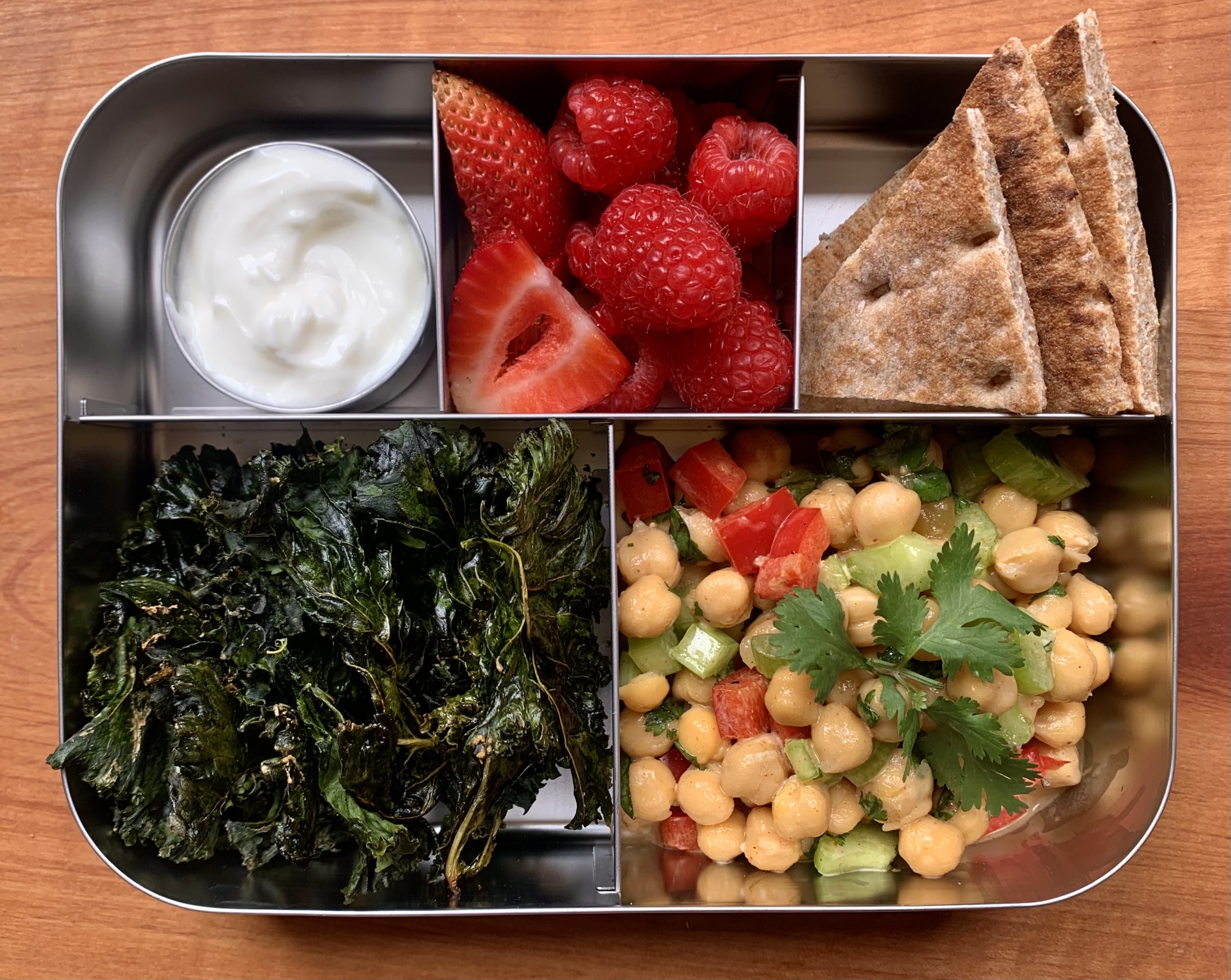
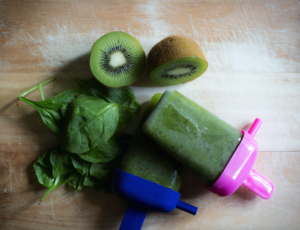




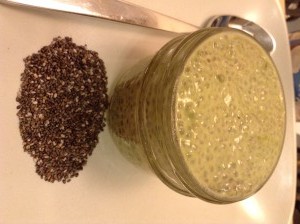



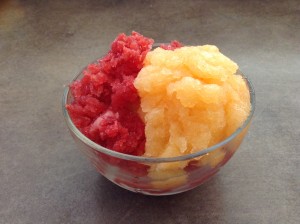








 It happened again yesterday. I was leading a workshop and a parent asked me: “Is it wrong to give my child smoothies with veggies in them? Is this considered hiding veggies?” Rarely a workshop goes by without a parent asking me about smoothies for their picky eater kids. They’re such a popular trend these days. While I touched on this in last week’s blog post; it’s such a common question that I get about healthy snacks for kids that I thought that it was worthwhile to expand on it today. And, share some ideas for smoothie ingredients.
It happened again yesterday. I was leading a workshop and a parent asked me: “Is it wrong to give my child smoothies with veggies in them? Is this considered hiding veggies?” Rarely a workshop goes by without a parent asking me about smoothies for their picky eater kids. They’re such a popular trend these days. While I touched on this in last week’s blog post; it’s such a common question that I get about healthy snacks for kids that I thought that it was worthwhile to expand on it today. And, share some ideas for smoothie ingredients.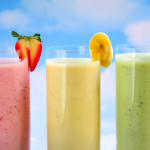 You’ve probably heard that it’s great to get your kids to help you in the kitchen to learn cooking skills, instill healthy eating habits, and more.
You’ve probably heard that it’s great to get your kids to help you in the kitchen to learn cooking skills, instill healthy eating habits, and more. {Guest Post at
{Guest Post at 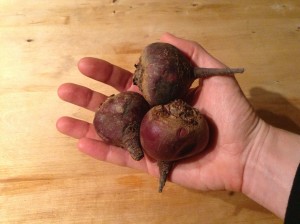 Aah, beets. These versatile root veggies are one of my favourites! As a dietitian, part of my job is to know how to prepare healthy foods like beets. So I’m sharing a couple of my favourite ways to use them. A classic storage, root veggie, you can find local ones (fairly cheap) throughout the winter here in Victoria, BC.
Aah, beets. These versatile root veggies are one of my favourites! As a dietitian, part of my job is to know how to prepare healthy foods like beets. So I’m sharing a couple of my favourite ways to use them. A classic storage, root veggie, you can find local ones (fairly cheap) throughout the winter here in Victoria, BC.